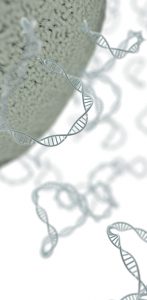
Not every lab has a tried and true transfection protocol that can be used by all lab members. Few researchers will use the same cell type and same construct to generate data. Many times, a scientist may need to transfect different constructs or even different molecules (e.g., short-interfering RNA [siRNA]) into the same cell line, or test a single construct in different cultured cell lines. One construct could be easily transfected into several different cell lines or a transfection protocol may work for several different constructs. However, some cells like primary cells can be difficult to transfect and some nucleic acids will need to be optimized for successful transfection. Here are some tips that may help you improve your transfection success.
Transfect healthy, actively dividing cells at a consistent cell density. Cells should be at a low passage number and 50–80% confluent when transfected. Using the same cell density reduces variability for replicates. Keep cells Mycoplasma-free to ensure optimal growth.
Transfect using high-quality DNA. Transfection-quality DNA is free from protein, RNA and chemical contamination with an A260/A280 ratio of 1.7–1.9. Prepare purified DNA in sterile water or TE buffer at a final concentration of 0.2–1mg/ml.
Optimize the amount of DNA used to transfect cells. The optimal amount of DNA to use in the transfection will vary widely, depending upon the type of DNA and target cell line used. We recommend initially testing 50–200ng of DNA per well in a 96-well plate format. Increasing the amount of DNA does not necessarily result in higher transfection efficiencies. To help decrease toxicity if observed, especially in primary cells, decreasing the DNA concentration may be helpful.
Optimize the transfection reagent:DNA ratio. For many cell lines, ratios of 1.5:1–4:1 of transfection reagent:DNA (microliters reagent:micrograms DNA) work well, but ratios outside of this range may be optimal for a particular cell type or application. Test other ratios to maximize the transfection efficiency. Transfection efficiency can be monitored using plasmids with reporter genes (e.g., firefly luciferase). An ideal reporter gene product is unique to the cell, can be expressed from plasmid DNA and can be assayed conveniently. Generally, such assays are performed 24–48 hours after transfection. We offer the FuGENE® HD Optimization Analysis worksheet to help determine the optimal ratio when using the FuGENE® HD Transfection Reagent.
Optimize cell number per well when transfected. The plating density for a specific cell line will depend on the growth rate. A general guideline is to plate about 5 × 105 adherent cells per 60mm culture dish or 106 suspension cells per assay. For 96-well plates, we generally recommend 1–2 × 104 adherent cells per well or 2–10 × 105 suspension cells per well. Scale the number of cells up or down proportionately if using different size plates.
Ensure the selected transfection reagent is compatible with medium containing serum for cells that require serum. Many transfection protocols require serum-free conditions for optimal performance because serum can interfere with many commercially available transfection reagents. However, there are reagents like ViaFect™ Transfection Reagent that can be used in transfection protocols in the presence of serum for transfecting cell types that require continuous exposure to serum, such as primary cell cultures.
Incubate DNA with transfection reagent for the optimal time. Many transfection reagents need time to form the transfection reagent:DNA complex (e.g., 5–20 minutes at room temperature for the ViaFect™ Transfection Reagent). The optimal time for complex formation varies for each cell line. Incubate transfected cells for 24–48 hours before assaying to allow time for expression of transfected DNA.
Not sure where to start when transfecting your cell line? The Transfection Assistant offers a starting point for transfection. Just choose a cell line and either FuGENE® HD or FuGENE® 6 Transfection Reagent to find conditions used in peer-reviewed literature. The FuGENE® HD Transfection Reagent Protocol Database has protocols for transfecting your cell line. Select the cell line, type of plate used and number of wells to be transfected and a protocol will be generated based on conditions tested by Promega scientists.
Need help with transfection optimization? This article “Optimize Transfection of Cultured Cells” shows how to set up and perform an optimization experiment.
Still have questions about transfection? Our Technical Services Scientists are available to help.
Sara Klink
Latest posts by Sara Klink (see all)
- A One-Two Punch to Knock Out HIV - September 28, 2021
- Toxicity Studies in Organoid Models: Developing an Alternative to Animal Testing - June 10, 2021
- Herd Immunity: What the Flock Are You Talking About? - May 10, 2021
